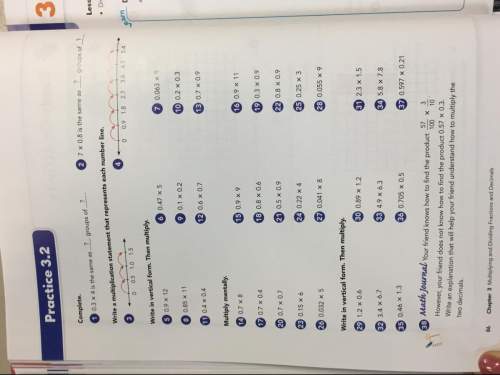
Mathematics, 31.12.2021 09:50 dewonpruitt22
Radioactive decay. Carbon-14 has a decay rate of 0.012097% per year. The rate of change of an amount N of carbon-14 is given by
where t is the number of years since decay began.
a) Let N0 represent the amount of carbon-14 present at t = 0. Find the exponential function that models the situation.
b) Suppose 200 g of carbon-14 is present at t = 0. How much will remain after 800 yr?
c) After how many years will half of the 200 g of carbon-14 remain?

Answers: 3


Another question on Mathematics

Mathematics, 21.06.2019 20:30
Daryl factors the polynomial p(x)=x3+x2−26x+24 to rewrite it as p(x)=(x+6)(x−4)(x−1). which equations must be true? there may be more than one correct answer. select all correct answers. p(1)=0 p(−4)=0 p(−1)=0 p(6)=0 p(4)=0 p(−6)=0
Answers: 1


Mathematics, 21.06.2019 22:30
What is the graph of the absolute value equation ? y=|x|-5
Answers: 1

Mathematics, 22.06.2019 02:00
V=x^4-y^4 pick three expressions that can represent the three dimensions of the prism (each in meters)
Answers: 2
You know the right answer?
Radioactive decay. Carbon-14 has a decay rate of 0.012097% per year. The rate of change of an amount...
Questions


Mathematics, 12.12.2019 00:31



Mathematics, 12.12.2019 00:31

English, 12.12.2019 00:31

Mathematics, 12.12.2019 00:31





Mathematics, 12.12.2019 00:31

Arts, 12.12.2019 00:31





Mathematics, 12.12.2019 00:31

Mathematics, 12.12.2019 00:31

Mathematics, 12.12.2019 00:31





